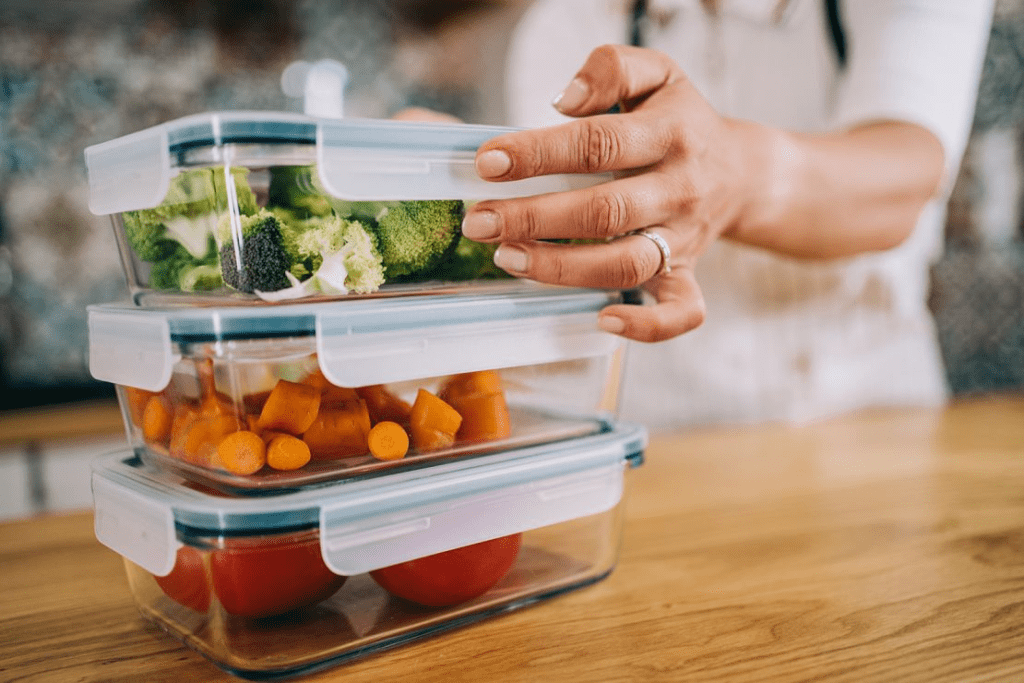The microwave is one of the most convenient kitchen appliances, perfect for quick meals and reheating leftovers. However, not all foods handle the microwave’s heat well, and some can even pose safety risks. To help you make the most of your microwave, here’s a list of foods you should avoid putting in it—and the reasons why.

1. Foods with High Fat Content
High-fat foods, like bacon and sausages, are tempting to toss in the microwave for a quick cook. However, these foods can splatter and cook unevenly. The microwave heats fat differently than a stovetop or oven, often leading to an underwhelming texture and greasy mess. For better results and crispier food, use a skillet or bake them in the oven.
2. Eggs in Their Shell
Microwaving a whole egg with its shell intact is a recipe for disaster. The steam generated inside the shell builds pressure, which can cause the egg to explode, making a mess inside your microwave and potentially damaging it. To cook eggs in the microwave safely, break them into a microwave-safe dish and pierce the yolk to allow steam to escape. Scrambled eggs or poached eggs in the microwave? Go ahead! Whole eggs? Better left to the stovetop.
3. Processed Meats
Hot dogs, deli meats, and other processed meats can turn rubbery and lose their flavor when microwaved. Microwaving can cause uneven heating, which not only affects taste but can also impact the food’s texture and nutritional value. Additionally, processed meats may contain preservatives or additives that aren’t ideal for microwave heating, as they can break down under high temperatures. When possible, warm these items using the stovetop or oven for better results.
4. Leafy Greens
Leafy greens like spinach, kale, or lettuce don’t fare well in the microwave. The high water content in these greens means they’ll wilt quickly, often leaving them soggy and less appetizing. What’s more, some leafy greens contain nitrates that, when exposed to high microwave temperatures, can convert into potentially harmful compounds. Instead, steam or sauté these greens for a more nutritious and flavorful result.
5. Certain Fruits

Fruits with high water content, such as grapes or watermelon, are best enjoyed fresh—not from the microwave. Microwaving these fruits can cause them to become mushy or even explode due to rapid steam buildup. Grapes, for example, are notorious for bursting when heated in a microwave. Some fruits like apples can be gently microwaved for specific recipes, but as a general rule, it’s better to keep high-water fruits out of the microwave.
6. Frozen Foods with Breaded Coatings
Frozen breaded foods, like chicken nuggets or fish sticks, are meant to be crispy. Unfortunately, microwaving these items often results in a soggy, steamed coating rather than the crispy crust you’d expect. The microwave generates steam that affects the breading’s texture, and there’s no airflow to create that coveted crunch. For the best results, use an oven, toaster oven, or air fryer to maintain that satisfying crispiness.
7. Foods in Plastic Containers

It might be convenient to heat food in the container it came in, but unless it’s specifically labeled microwave-safe, you should avoid microwaving plastic. Many plastic containers can release harmful chemicals, like BPA and phthalates, when heated. These chemicals can leach into your food and pose health risks over time. For safe microwaving, transfer your food to a glass or ceramic dish that’s labeled as microwave-safe.
8. Spicy Peppers
Heating spicy peppers like jalapeños or habaneros in the microwave can release capsaicin—the compound that gives peppers their heat—into the air. When the microwave door opens, the capsaicin can cause a painful, peppery vapor that may irritate your eyes, nose, and throat. To avoid this unpleasant surprise, consider cooking spicy peppers on the stovetop with good ventilation instead of in the microwave.
Bonus Tips: Foods That Need Extra Care in the Microwave
Some foods can be microwaved but require a little extra attention to prevent mishaps. For instance:
- Tomato-Based Sauces: These can splatter easily, so cover them with a paper towel or microwave-safe lid.
- Potatoes: Always pierce potatoes before microwaving to allow steam to escape and prevent bursting.
- Leftover Rice: Be sure to add a splash of water and cover to prevent dryness, as rice can harden in the microwave.
Why Certain Foods Don’t Work Well in the Microwave

So, why don’t these foods perform well in the microwave? The answer lies in how microwaves heat food. Unlike an oven or stovetop, microwaves work by agitating water molecules inside the food, creating steam that heats the item from the inside out. For foods with high fat or water content, this can cause uneven heating, splattering, and even explosions.
Moreover, microwaves don’t offer the dry heat needed to create crispy textures, making them unsuitable for foods that require a crusty or browned finish. This is why breaded foods and fatty meats are best left to other cooking methods. And, of course, safety is paramount when considering materials like plastic, which can release chemicals when microwaved.
Better Alternatives for Cooking or Reheating Certain Foods
If you’re wondering how to cook or reheat the items mentioned without the microwave, here are some great alternatives:
- Oven: Ideal for foods that need even heat distribution and crisp textures, like breaded foods, pizzas, and meats.
- Stovetop: Great for reheating leftovers that require more precise temperature control, such as sauces, soups, and casseroles.
- Air Fryer: Excellent for achieving a crispy finish on breaded and fried items, without the use of excess oil.
- Steamer: Perfect for vegetables, especially leafy greens, to preserve nutrients and maintain the best texture.
Conclusion: When to Skip the Microwave for Better Results
While the microwave is a versatile tool, it isn’t always the best choice for every type of food. High-fat items, leafy greens, plastic containers, and certain fruits and vegetables all fare better with other cooking methods. By knowing when to skip the microwave, you’ll enjoy better textures, enhanced flavors, and a safer cooking experience.
Next time you’re tempted to microwave bacon or heat leftovers in a plastic container, consider an alternative cooking method to get the best results. Whether it’s for taste, texture, or safety, a little extra time using the oven, stovetop, or air fryer can make all the difference in your meal.


